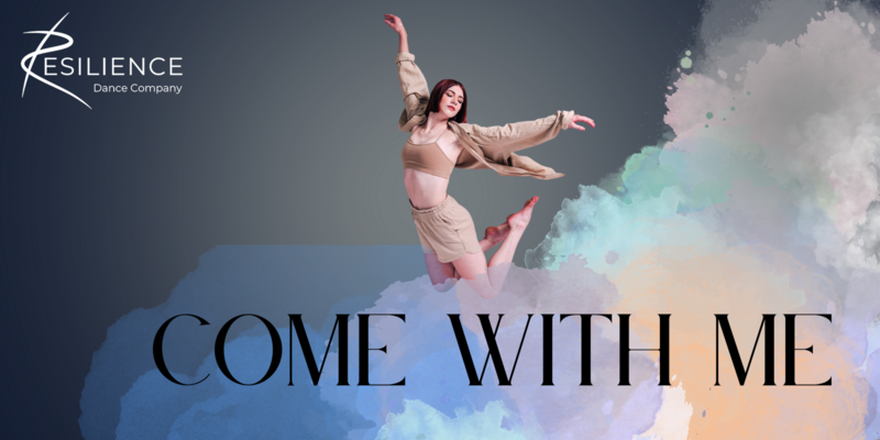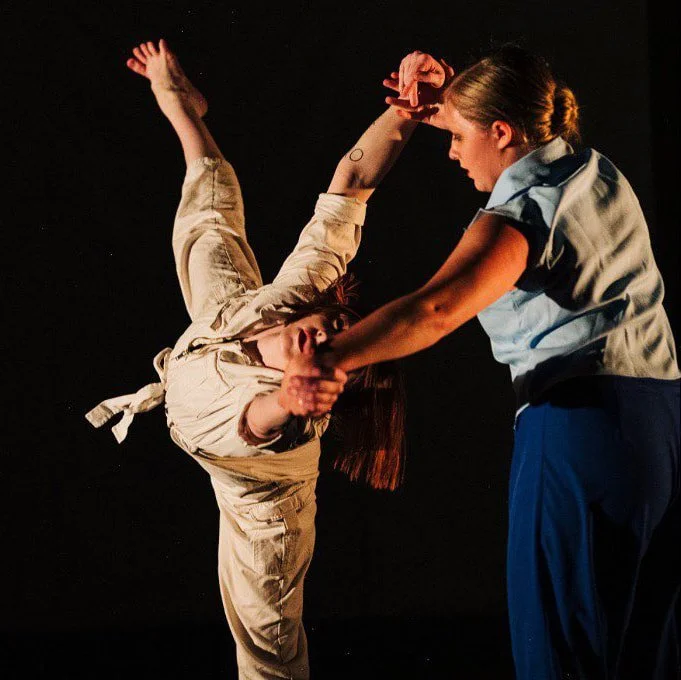HQ Review: RESILIENCE Dance Company’s “Come With Me”
It was a cold, grey Sunday morning and was well on my way towards spending it sprawled out on my living room couch. My weekend had been filled with eating, drinking, and balancing the realities of a visit from my in-laws. It was fun, but it had worn me out, leaving me craving an afternoon spent watching movies as big as Star Wars but as polished as something by Christopher Nolan. As I scrolled through Netflix, my Outlook calendar reminded me of the RESILIENCE Dance Company’s concert “Come With Me” at Intersect Arts Center in South St. Louis City. I had not yet been to one of their shows, and until Sunday had only seen them perform work at events produced by other organizations. And yet—I’m embarrassed to admit—at that moment, I had comparatively little interest in attending a matinee of contemporary dance. My reluctance had nothing to do with the quality of artistic director Emily Haussler’s company, in fact, I find Resilience Dance Company to be one of the most exciting things to happen to St. Louis’ dance community in years. Their research-based movement approach and embrace of improvisation have captured my attention every time I’ve been fortunate enough to see them perform. Their dedication to fairly compensating their artists and providing them with access to mental and physical health resources should be an inspiration to other young dance companies...
Alas, my reason for remaining locked to my couch on this particular Sunday afternoon boiled down to pure laziness. I needed to escape into a world someone else had created for me and I was about to do just that when our St. Louis Dance HQ editor reminded me that the show was only an hour long, and I’d promised to go. Sighing, I heaved myself off the couch, put on some pants, and walked out my door. Upon arriving at the concert and opening my program, I realized the irony of my situation. The afternoon’s titular piece was organized almost entirely around the concept of escapism. The low-effort bliss I had been so desperately craving this afternoon would be put under the ever-too-honest microscope of movement research to be dissected, challenged, and dealt with over the course of the next hour. I allowed myself a small chuckle and prepared myself to be exposed as a fool by my own critique.
Emily Haussler’s “Come With Me” opens with a dancer, a couch, and a remote control. The rest of the cast slowly trickles onto the stage, and over the course of the introductory section, gathers in front of a white light that clearly mimics the evening-time glow of a television set on the dancers’ faces. Some of the dancers seem quite anxious, fidgeting or turning their heads, while others appear entirely absorbed in what they see on the imaginary TV. The couch resonated deeply with me, as I suspect it did with much of the audience. Our collective experience over the last three years has been heavily tied to our homes, our furniture, and our screens. At times, we’ve found great comfort in these places, but we’ve also watched world-changing events unfold while negotiating increasingly complicated and intermingled relationships with our home space. The lines between what we are escaping from and escaping into have blurred—was I the only American who watched from my couch the early days of the Ukraine war with a sick fascination, or tuned into presidential debates ready to cheer for my preferred candidate the same way I’d cheer on my favorite sports team? In “Come With Me,” the couch seemed to inspire a sense of dreadful fascination in the dancers. Never did there seem to be a purely happy moment on it. Had I had any memorable, purely happy moments on my couch over the last three years?
As the dancers moved on stage I asked myself other questions too. At what point in our lives do we trade creativity for escapism & nostalgia? It was hard not to think of children’s play while watching “Come With Me.” The building that houses Intersect Arts Center resembles a former school, I suspect it could have been one in a former life. As the dancers explored their relationships with each other, frolicking through the space in costumes bright with primary colors, it was easy to imagine the little bodies that must have once occupied this same space. One moment, in particular, stood out to me as endearingly childlike. As most of the cast had gathered in a moment of collective anxiety, two dancers remained on the outskirts, in a back corner. They seemed to be exploring the effects that the tips of their fingers had on each other’s movements. It was a stark rendering of the blissful ignorance that children possess. It is amazing to think of how little children know (or care) about a great many things happening outside their immediate bubble while also being entranced with whatever frivolous detail has their attention at any given moment. Watching these dancers in that moment made me wonder if escapism can have a healthy component. Perhaps dancing, and artistic creation more generally, is a practice of productive escapism.
RESILIENCE's movement style is one of the aspects of the company that I admire most. It sits positioned solidly within the contemporary vein of release technique. The dancers use the weight of their bodies to help propel them through space. Their cast is full of dancers with unique styles, but through the alignment of energy, a cohesive movement vocabulary is established. At times, it can teeter on the edge of chaos. Such was the case in my favorite section of “Come With Me.” Toward the middle of the piece, the company rocks the house with an athletic cut that is more unison-oriented and more frontal than the rest of the piece. When frantic bursts of energy eventually subside, the company resets and establishes a new pace. This kept the show lively and dynamic even on a smaller stage with no real wings.
It’s not my place to tell choreographers how to make dances, but I did wonder if the couch was a prop or a set piece. What could have happened if more of a focus was placed on how the couch affected the movement of the dancers? Conversely, what ideas would have been inspired in me if the design had been more theatrical (perhaps actually putting a TV on stage)? These questions weren’t answered, but the fact that I was asking them has since made me realize that I’m craving a second iteration of this work.
I returned to my own couch happy to have attended the performance. As the sun set, I flipped on the news and was reminded of the work’s closing scene, perhaps the most emotionally effective vignette from the dance. Two dancers, one seemingly much calmer than the other, climb on the couch. The more anxious-seeming dancer curls into a ball and nuzzles into the other. It was tender, sad, happy, and familiar all at once. How many times had I sat on a couch like that with my partner? In that moment, it seemed clear that whatever they were watching, be it Willy Wonka or one of Fauci’s COVID briefings, the two were safe in part because they were together. As I contemplated the piece for the final time that night, I realized “Come With Me,” hadn’t found any answers, but instead it had found balance and peace in the ambiguity of an uncertain world—in this case one created by Haussler and her dancers. Perhaps through play, imagination and community, we too can escape into a world balanced by its occupants.





